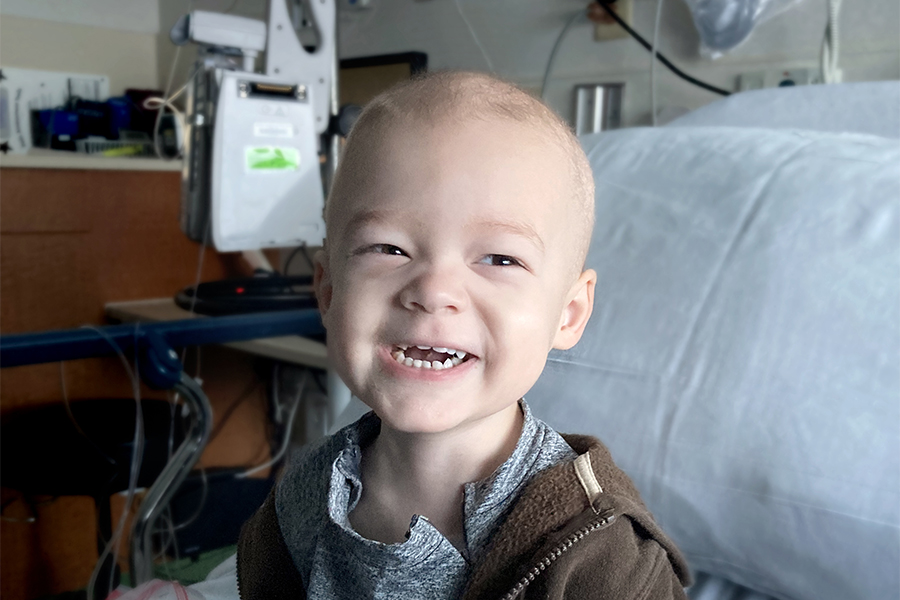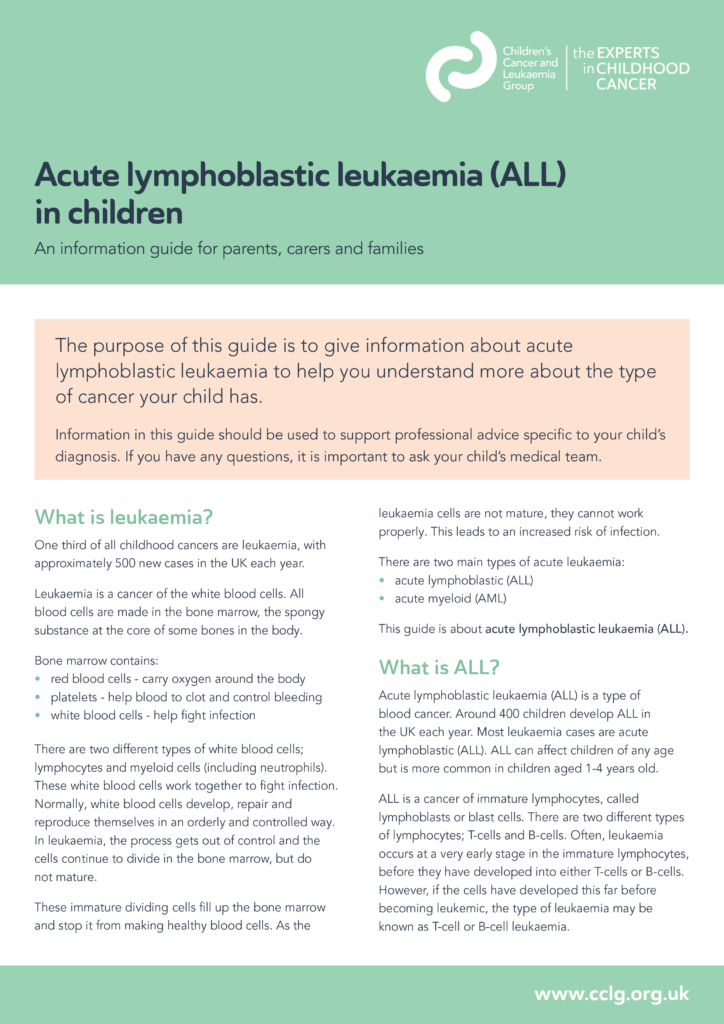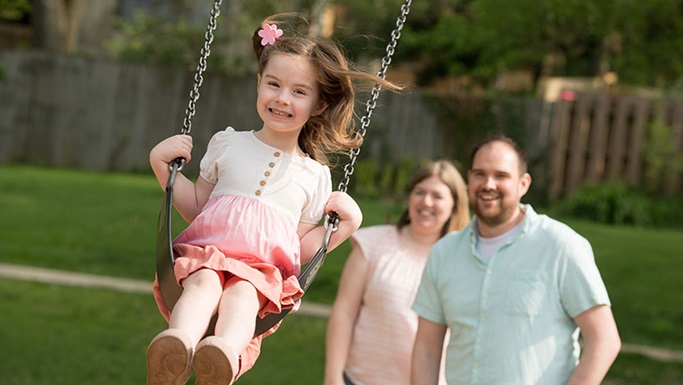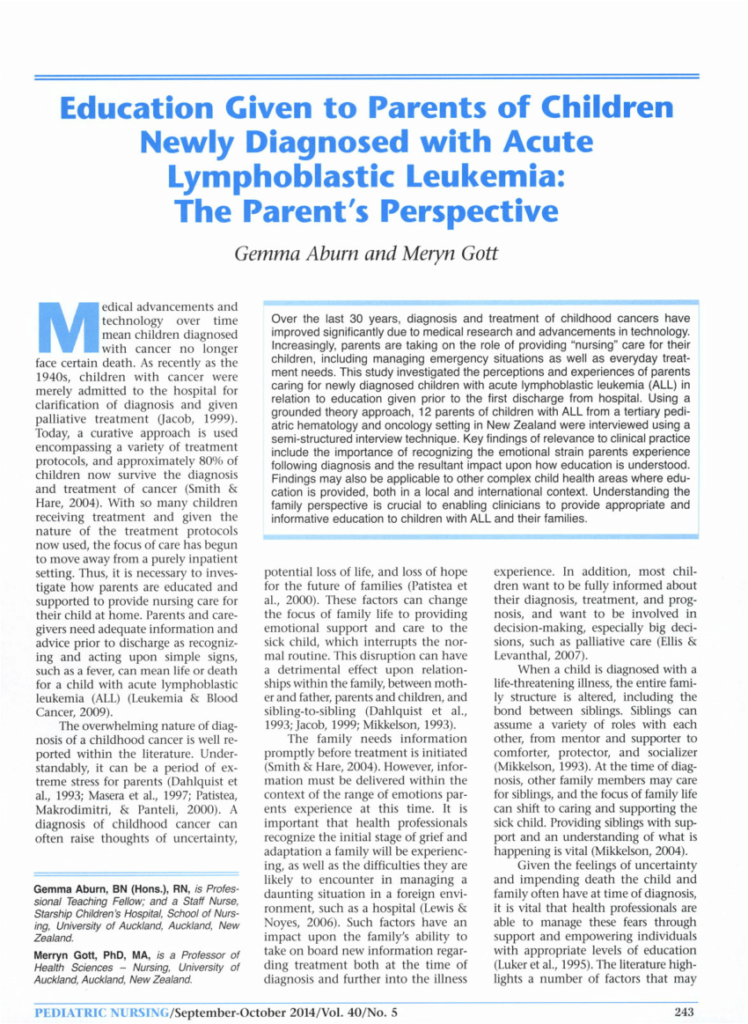Imagine a world where every child diagnosed with Acute Lymphoblastic Leukemia (ALL) and their families receive the support and resources they need during their challenging journey. This article aims to shed light on the importance of providing comprehensive support to these brave children and their families, exploring the impact it can have on their physical, emotional, and mental well-being. By highlighting the different ways we can come together as a community to offer our support, we can make a difference in their lives and provide the strength and encouragement they need to navigate this difficult path. So, let’s embark on this journey of understanding and compassion, as we delve into the world of supporting children with Acute Lymphoblastic Leukemia and their families.
Understanding Acute Lymphoblastic Leukemia (ALL)
What is Acute Lymphoblastic Leukemia (ALL)?
Acute Lymphoblastic Leukemia (ALL) is a type of cancer that affects the blood and bone marrow. It is the most common type of cancer in children, although it can also occur in adults. ALL originates in the bone marrow, where the production of abnormal white blood cells hinders the body’s ability to produce healthy blood cells. These abnormal cells, known as lymphoblasts, multiply quickly and crowd out the healthy cells, leading to a range of symptoms and complications.
Causes and Risk Factors
The exact cause of ALL is still unknown, but many factors can increase the risk of developing the condition. Some genetic conditions, such as Down syndrome, are associated with a higher risk of developing ALL. Exposure to high levels of radiation or certain chemicals, such as benzene, can also increase the risk. Additionally, a family history of leukemia or certain genetic mutations can contribute to the development of ALL.
Symptoms and Diagnosis
The symptoms of ALL can vary depending on the age of the child and the severity of the disease. Common symptoms include fatigue, pale skin, shortness of breath, frequent infections, easy bruising or bleeding, bone pain, and swollen lymph nodes. These symptoms are often nonspecific and can be mistaken for other illnesses, leading to a delay in diagnosis. To confirm a diagnosis, doctors will perform a series of tests, including blood and bone marrow tests, to identify the presence of abnormal cells.
Treatment Options
The treatment of ALL is a multi-step process that aims to eliminate cancer cells, prevent relapse, and minimize long-term side effects. The primary treatment for ALL is chemotherapy, which involves the administration of powerful drugs to destroy cancer cells. Depending on the specific characteristics of the cancer, radiation therapy may also be used to target and kill cancer cells. In some cases, a bone marrow or stem cell transplant may be necessary to replace damaged cells with healthy ones. The specific treatment plan will depend on the child’s age, overall health, and the stage of the disease.
Medical Support for Children with Acute Lymphoblastic Leukemia
Effective Treatment Strategies
When it comes to the treatment of Acute Lymphoblastic Leukemia, a collaborative approach involving a team of healthcare professionals is crucial. This team typically comprises oncologists, hematologists, nurses, and other specialists who work together to develop a comprehensive treatment plan tailored to the specific needs of the child. By combining different treatment modalities, such as chemotherapy, radiation therapy, and bone marrow transplantation, healthcare professionals can maximize the chances of successful treatment and long-term remission.
Chemotherapy and Radiation Therapy
Chemotherapy is the cornerstone of treatment for Acute Lymphoblastic Leukemia. It involves the use of powerful drugs to kill cancer cells and prevent their replication. These drugs may be administered orally, intravenously, or directly into the cerebrospinal fluid through a lumbar puncture. Radiation therapy, on the other hand, uses high-energy beams to target and destroy cancer cells. It is commonly used in conjunction with chemotherapy to treat localized or high-risk disease. Both chemotherapy and radiation therapy can have side effects, but medical support is available to manage these and ensure the child’s comfort and well-being.
Bone Marrow and Stem Cell Transplants
For some children with Acute Lymphoblastic Leukemia, a bone marrow or stem cell transplant may be necessary to restore the bone marrow’s ability to produce healthy blood cells. This procedure involves replacing damaged or diseased cells with healthy cells obtained from a donor, typically a sibling or a matching unrelated donor. The transplant process is complex and requires careful monitoring and support to ensure the best possible outcome. Medical professionals play a critical role in assessing the child’s eligibility for transplantation, coordinating the transplant procedure, and managing any complications that may arise.

Psychosocial Support for Children with Acute Lymphoblastic Leukemia
Importance of Psychosocial Support
Dealing with any serious illness, such as Acute Lymphoblastic Leukemia, can take a toll on a child’s emotional well-being. That is why psychosocial support is a vital component of their overall care. Psychosocial support focuses on addressing the child’s emotional, social, and psychological needs throughout the treatment journey. By providing counseling, therapy services, and activities to promote resilience and emotional coping skills, healthcare professionals can help children and their families navigate the challenges associated with their diagnosis and treatment.
Coping Strategies for Parents and Caregivers
Parents and caregivers of children with Acute Lymphoblastic Leukemia also require support to help them cope with the immense stress and emotional strain that can come with caregiving. It is crucial for healthcare professionals to recognize the importance of including parents and caregivers in the psychosocial support network. By providing information, counseling, and access to support groups, healthcare professionals can empower parents and caregivers to effectively manage their own emotional well-being while caring for their child.
Supporting Siblings and Other Family Members
The impact of Acute Lymphoblastic Leukemia extends beyond the diagnosed child to their siblings and other family members. Siblings may experience feelings of fear, anxiety, and guilt, as their parents focus their attention and energy on the child with cancer. Providing psychosocial support to siblings can help alleviate these feelings and ensure their emotional well-being. Similarly, extended family members can also benefit from support and guidance to help them understand and navigate the challenges associated with the child’s diagnosis.
School Support for Children with Acute Lymphoblastic Leukemia
Educational Challenges and Needs
Acute Lymphoblastic Leukemia can greatly impact a child’s ability to attend school regularly and keep up with their peers academically. Frequent hospital visits, treatment schedules, and potential side effects can disrupt their education and make it challenging to maintain academic progress. It is crucial for schools to be aware of these challenges and provide appropriate support to help the child continue their education effectively.
Developing Individualized Education Plans (IEPs)
To address the unique educational needs of children with Acute Lymphoblastic Leukemia, schools can develop Individualized Education Plans (IEPs). An IEP is a legal document that outlines the child’s specific learning goals, accommodations, and support services they require to succeed academically. By working closely with the child’s healthcare team and parents, schools can ensure that the child’s educational needs are met during their treatment and recovery.
Supporting Transitions and Reintegration
As children with Acute Lymphoblastic Leukemia transition back to school after their treatment, they may face additional challenges in terms of reintegrating into their academic environment and adjusting to the changes that occurred during their absence. Schools can play a vital role in supporting the child’s successful reintegration by fostering a positive and inclusive school environment, providing counseling or therapy services if necessary, and offering flexibility to accommodate the child’s ongoing medical needs.

Nutritional Support for Children with Acute Lymphoblastic Leukemia
Maintaining a Healthy Diet during Treatment
Maintaining a healthy diet is essential for children with Acute Lymphoblastic Leukemia to support their overall well-being and aid in their recovery. However, the side effects of treatment, such as loss of appetite, nausea, and taste changes, can make eating a challenge. Healthcare professionals, including nutritionists and dietitians, can work with the child and their family to create meal plans that are both nutritious and appealing, taking into account any dietary restrictions or preferences.
Managing Side Effects of Treatment on Nutrition
Certain treatments for Acute Lymphoblastic Leukemia can have side effects that impact a child’s nutrition and eating habits. For example, oral medications may require specific timing or dietary restrictions. Chemotherapy may cause gastrointestinal issues, and radiation therapy can affect the child’s ability to swallow comfortably. Nutrition support, provided by healthcare professionals, can help manage these side effects and ensure the child receives adequate nutrition to support their recovery.
Dietary Recommendations and Guidelines
During treatment for Acute Lymphoblastic Leukemia, it is important for children to follow certain dietary recommendations and guidelines to optimize their nutrition and minimize side effects. These recommendations may include increasing caloric intake, consuming high-protein foods, incorporating fruits and vegetables, and staying hydrated. Healthcare professionals can provide detailed guidance on these recommendations, taking into account the child’s unique dietary needs and any treatment-related concerns.
Physical Activity and Rehabilitation for Children with Acute Lymphoblastic Leukemia
Benefits of Physical Activity
Physical activity plays a crucial role in the overall well-being and rehabilitation of children with Acute Lymphoblastic Leukemia. Regular exercise can help improve strength, endurance, and overall cardiovascular health. Additionally, physical activity can boost mood, reduce treatment-related side effects, and enhance overall quality of life. Healthcare professionals can work with the child to develop individualized exercise programs that are safe, effective, and tailored to their specific needs and abilities.
Tailoring Exercise Programs for Individual Needs
Children with Acute Lymphoblastic Leukemia have unique physical abilities and limitations based on their treatment and overall health. It is essential that exercise programs are individualized to accommodate these specific needs. Healthcare professionals can provide guidance on appropriate exercises, taking into account factors such as age, treatment stage, and physical capabilities. By tailoring exercise programs to the child’s abilities and preferences, healthcare professionals can ensure that physical activity is enjoyable, safe, and effective.
Rehabilitation and Physiotherapy Options
In addition to regular physical activity, children with Acute Lymphoblastic Leukemia may require specialized rehabilitation and physiotherapy to address specific physical challenges and optimize their recovery. Rehabilitation programs may focus on improving mobility, balance, and coordination, addressing any functional limitations, and promoting independence. Healthcare professionals, such as physiotherapists and occupational therapists, play a vital role in providing these services and supporting the child’s physical rehabilitation journey.

Financial Support for Families of Children with Acute Lymphoblastic Leukemia
Understanding the Financial Burdens
Families of children with Acute Lymphoblastic Leukemia often face significant financial burdens due to the costs associated with treatment and care. These costs can include medical bills, prescription medications, travel expenses for hospital visits, and the loss of income due to a parent’s reduced work hours or absence from work to care for the child. Understanding and addressing these financial burdens is crucial to ensure that families can focus on their child’s health and well-being without the added stress of financial strain.
Insurance Coverage and Assistance Programs
The availability of insurance coverage and assistance programs can help alleviate some of the financial burdens faced by families. Health insurance policies may cover a portion of medical expenses, and government programs, such as Medicaid or State Children’s Health Insurance Program (SCHIP), can provide additional support for eligible families. It is essential for healthcare professionals to guide families in understanding their insurance coverage options and connecting them with assistance programs that may be available.
Fundraising and Community Support
In cases where insurance coverage and assistance programs may not fully meet the financial needs of families, fundraising and community support can play a crucial role. Fundraising events, such as charity walks or social media campaigns, can help raise funds to offset medical expenses. Local organizations, support groups, and community members can also provide financial assistance, meals, or other forms of support to alleviate the financial burdens faced by families.
Supporting the Emotional Well-being of Children with Acute Lymphoblastic Leukemia
Counseling and Therapy Services
Children with Acute Lymphoblastic Leukemia often experience a range of emotions, including fear, anxiety, sadness, and frustration, throughout their treatment journey. Counseling and therapy services can provide a safe and supportive space for children to express their feelings, learn coping strategies, and develop resilience. Psychologists, social workers, and other mental health professionals can work closely with children to address their emotional needs and help them navigate the psychological challenges associated with their diagnosis.
Promoting Resilience and Emotional Coping Skills
Building resilience and emotional coping skills is essential for children with Acute Lymphoblastic Leukemia to navigate the ups and downs of their treatment and recovery. Healthcare professionals can provide psychoeducation, teach stress management techniques, and help children develop healthy coping mechanisms. By equipping children with these skills, healthcare professionals empower them to face the emotional challenges of living with cancer and promote their long-term emotional well-being.
Peer Support and Support Groups
Connecting children with Acute Lymphoblastic Leukemia to peer support groups and other children going through similar experiences can provide invaluable emotional support and a sense of belonging. Support groups can be facilitated by healthcare professionals or organized by local organizations or hospitals. These groups create a space for children to share their experiences, learn from one another, and find solace and understanding in their peers who are facing similar challenges.

Alternative and Complementary Therapies for Children with Acute Lymphoblastic Leukemia
Exploring Alternative Treatment Options
Alternative and complementary therapies are non-traditional approaches to healthcare that aim to complement conventional treatments and enhance overall well-being. While these therapies should never replace evidence-based medical treatments, they can be explored as additional supportive measures for children with Acute Lymphoblastic Leukemia. Examples of alternative and complementary therapies include acupuncture, massage therapy, yoga, and herbal medicines. It is essential that healthcare professionals and families work together to ensure the safety and appropriateness of any chosen alternative therapies.
Supportive Therapies to Enhance Well-being
Supportive therapies, such as music therapy, art therapy, and animal-assisted therapy, can provide emotional support, reduce anxiety, and enhance overall well-being for children with Acute Lymphoblastic Leukemia. These therapies offer a creative outlet for self-expression, promote relaxation, and provide a source of comfort during difficult times. By incorporating supportive therapies into the child’s overall care plan, healthcare professionals can address their emotional needs and enhance their quality of life.
Considerations and Safety Measures
When considering alternative and complementary therapies for children with Acute Lymphoblastic Leukemia, it is crucial to prioritize safety and consult with healthcare professionals. Not all therapies are suitable for every child, and some may interact with conventional treatments or pose risks. Healthcare professionals can provide guidance on the appropriateness and safety of specific therapies based on the child’s individual circumstances. Open communication between healthcare professionals, families, and any external therapists or practitioners is essential to ensure the child’s well-being and prevent any potential adverse effects.
Transitioning to Survivorship for Children with Acute Lymphoblastic Leukemia
Long-term Monitoring and Follow-up Care
After completing treatment for Acute Lymphoblastic Leukemia, children enter a phase known as survivorship. During this phase, regular monitoring and follow-up care are crucial to detect and manage any potential late effects of treatment and ensure the child’s long-term health and well-being. Healthcare professionals will schedule regular check-ups, perform diagnostic tests, and monitor the child’s progress to identify and address any ongoing medical concerns.
Psychological and Emotional Support
The transition to survivorship can bring forth a range of emotions, including relief, fear, and uncertainty. Children may experience anxiety about potential relapse or adjust to their new normal after completing treatment. Psychological and emotional support remains critical during this phase to help children process their experiences, address any lingering fears, and promote positive mental health. Counseling, therapy services, and support groups can all play a vital role in providing this ongoing support.
Addressing Late Effects and Reintegration into Daily Life
Some children who have undergone treatment for Acute Lymphoblastic Leukemia may experience late effects, which are long-term or delayed side effects of treatment. Late effects can vary depending on the specific treatments received and the individual child but can include issues with growth and development, fertility, learning difficulties, and increased risk of secondary cancers. Healthcare professionals will monitor the child for these effects and provide appropriate interventions and support. Additionally, healthcare professionals can work closely with the child, their family, and the school to support the child’s reintegration into daily life and assist with any lingering educational or social challenges.
Watch This Video Below
Related Terms About Supporting Children with Acute Lymphoblastic Leukemia and their Families
Can A Child Live With Leukemia, How Does Leukemia Affect Child Development, How To Take Care Of A Child With Leukemia, Support Child With Leukemia, What To Say To Parents Of Child With Leukemia
